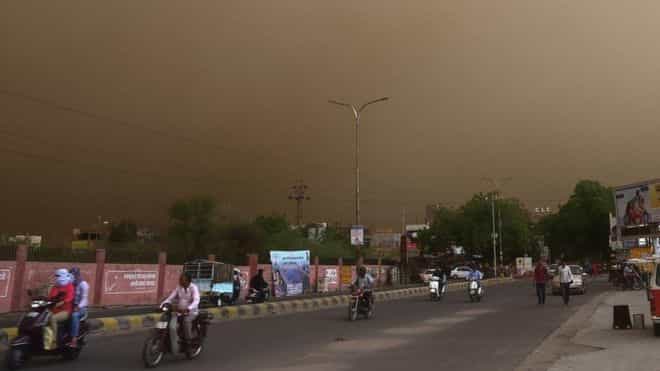If you happen to have visited India, you would find that the summer months, starting from March onward to June end are a torrid time. Not the best idea really to be travelling to India from both overseas and moving around internally during these testing months. But in 2018, a bit of a suddenness struck with the coming about of a sandstorm. This wasn’t on the cards really.

Living in India, one simply has to lurk in the corners of the mind to find out when was the last that a sandstorm came calling? And more than that, when was it that such a huge destruction was struck? Loss of lives in a dust storm is rather shaky and cuts a sorry figure of a country where there’s hardly a dearth of weather-related anomalies. It is believed that as many as 125 people have already died due to a massive bout of sand storm that may only continue in the days to come.
Where on the one hand the summers have often been an excellent time for revellers to hit beach destinations with friends and family, the news about casualties comes across as a huge dampener. And truth be told, the carnage doesn’t end here. Over the next coming days, it is believed, that the death toll is likely to rise in the coming days.

However, while the remainder of India in the East and South haven’t thankfully experienced any of such travesties, the worst hit ares are those in the North-central and Western India. Boiling it down, places like Alwar in Rajasthan (in close proximity to Jaipur) and Agra in Uttar Pradesh and other districts of UP have been marred by the coming of this unprecedented occurrence.

But while that may still not seem any worrying, you instantly understand the concern when a word comes from a senior government spokesperson. It is believed that a spokesperson for the Uttar Pradesh relief commissioner’s office has shared that the death toll has been highest there’s ever been in last two decades. There is reason for people to be on alert. But no sight can ever tell a complete picture about the damage caused by the sandstorm. Thus far, electricity has been wiped out from villages and towns, caused destruction of greens, significantly so bringing down trees and, even destroyed houses and livestock such as cattle. Why the towns and villages are the worst affected can be gauged from the fact that the principle income of most villagers in remote non-urban set ups is through farming and grazing of livestock.

Somber scenes enveloped the iconic Taj Mahal in Agra as it was one of the worst hit areas coming under the vehemence of the stand storm in India. Caught napping, many innocent lives were wiped away when people were simply asleep in the dead of the night. Thankfully, there is some relief on offer as the Uttar Pradesh government has announced a relief of $6000 dollars to each family affected by the plight. But it’s not too hard to note that no amount of financial security can assuage the real suffering. But then again, who can come in the way of mother nature?


